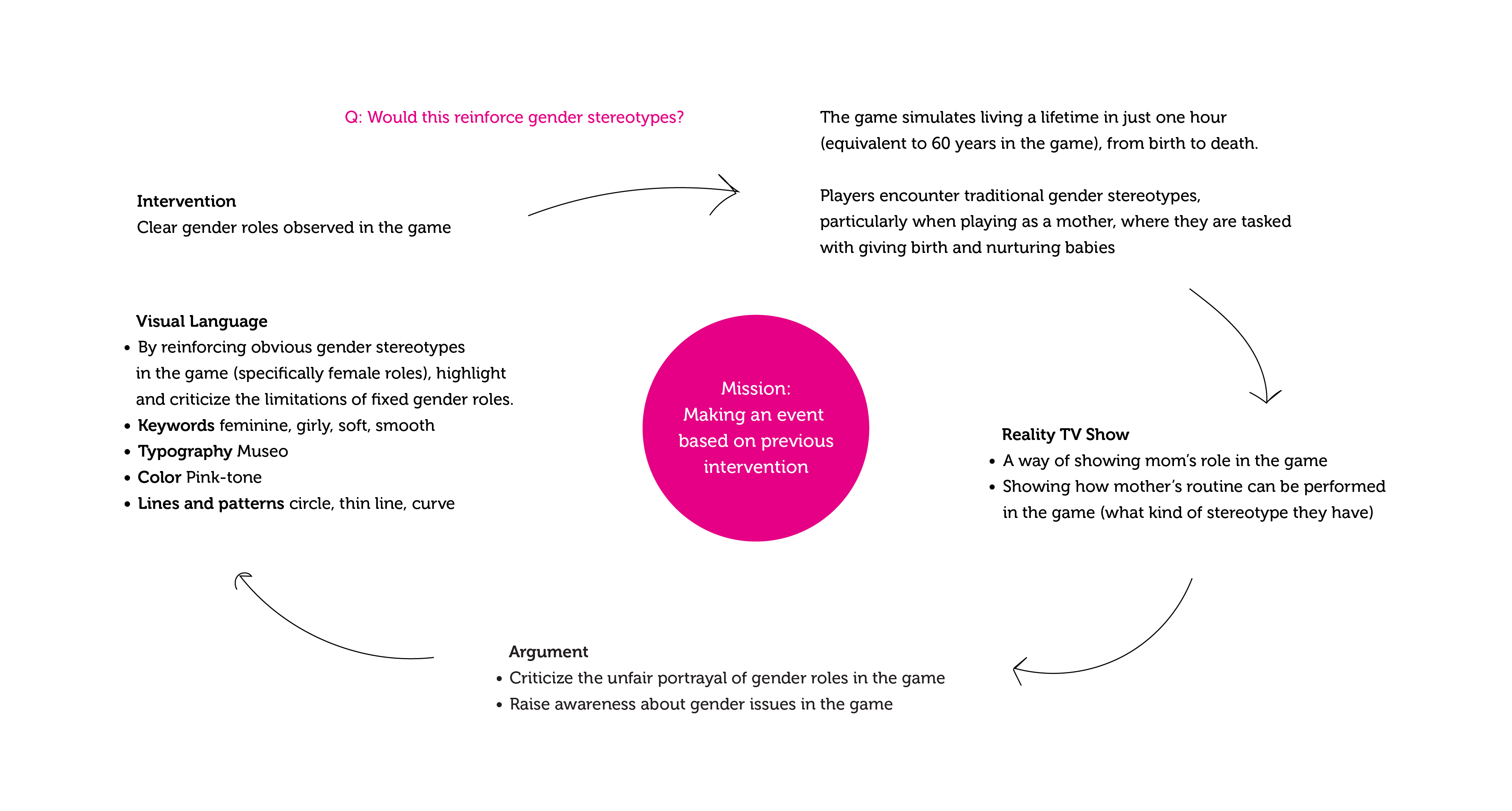Mom Alone
Design Research
Illustration
Motion Graphic
Mom Alone is a series of works created as part of a media design project, exploring virtual worlds through a livestream performance on Twitch.
The mission was to select a multiplatform game and make an intervention based on the observation and experience of the game. The second part of the brief involved recreating the game as an event (in any media format) based on the first intervention.
The game I chose was One Hour One Life, a multiplayer survival game centered on parenting and civilization-building. In the game, specific gender roles are assigned: players who take on the role of a mother care for babies, while those playing as fathers focus on working for the community. My intervention aimed to disrupt these predefined gender roles, exploring their impact and challenging their structure within the game.
The mission was to select a multiplatform game and make an intervention based on the observation and experience of the game. The second part of the brief involved recreating the game as an event (in any media format) based on the first intervention.
The game I chose was One Hour One Life, a multiplayer survival game centered on parenting and civilization-building. In the game, specific gender roles are assigned: players who take on the role of a mother care for babies, while those playing as fathers focus on working for the community. My intervention aimed to disrupt these predefined gender roles, exploring their impact and challenging their structure within the game.
I made an intervention by which a male character can also play the role of a babysitter. I tried to discover what kind of restrictions exist, and also how other users might react to them. Through the intervention, I discovered that the game’s mechanics do not fully support male characters in caregiving roles. For instance, certain tasks, such as breastfeeding or nurturing infants, were unavailable to male characters, making them heavily dependent on female players. Additionally, other players often questioned or rejected the male character’s caregiving actions, reinforcing traditional expectations. Through this intervention, I wanted to point out the gender inequality in the game and, I hope, create an opportunity to question this issue.
The second part involved creating an event (which was live-streamed afterward) based on the intervention. For my event, I adopted an observational entertainment show (link) format, which is popular in Korea. Observational entertainment shows focus on celebrities’ daily routines by setting up hidden cameras in their residences and observing their behaviors when they are at home alone, very similar to the movie The Truman Show. Inspired by this idea, I created a show where viewers can observe Mom’s daily life routine from the game. By doing this I wanted to point out how mom's life in the game and their gender role is different from male characters.
The entire gameplay process was recorded including conversations with other players, and I titled it "8 life routins of Mom." The number 8 symbolizes an endless loop, representing the repetitive nature of gender roles embedded within the game. Through this symbolic title, I aimed to highlight how the responsibilities and expectations placed on the mom character in the game are continuously reinforced and repeated, in contrast to the male characters who do not face the same cyclical constraints. Throughout the video, the sounds of applause and audience laughter were added, mimicking the signature techniques often used in Korean observational entertainment shows.
Twitch Channel︎︎︎
Visual Language
For the branding of the entertainment show, I intentionally incorporated feminine elements to convey a satirical (ironic) point of view, reinforcing my critical stance on the repetitive gender roles portrayed in the game. Rather than telling the story in a generic or neutral way, I used graphic elements that are commonly associated with traditional female attributes, such as pink tones, soft and flowing shapes, and a curvy typeface. These choices were meant to exaggerate and highlight the gender stereotypes that the mom character embodies, making them more visible and open to critique.
The main characters in the show are limited to just two: the mom and the baby. This minimal cast reflects the game’s narrow perspective on gender roles, where the female character’s primary identity is tied to caregiving. To emphasize this, I created four distinct stages of the mom’s life (baby, girl, woman, and senior) to show how the cycle of gendered expectations begins early and continues throughout her life. This structure mirrors the in-game experience, illustrating how female characters are locked into a repetitive and lifelong caregiving loop.

